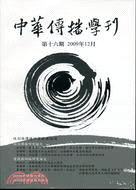 閱覽人數: 989
閱覽人數: 989
December
2009
No. 16
性別與傳播研究前瞻論壇
The Current Scholarship and Suggestions for Future Research in Feminist Studies頁數:177 - 213
作者(中)
陳炳宏
作者(英)
Ping-Hung Chen
關鍵詞(中)
媒體集團 ; 媒體內容多元 ; 綜效策略 ; 綜效偏差 ; 衛星電視頻道
關鍵詞(英)
synergy ; synergy bias ; cable channel ; content diversity ; product placement
中文摘要
當集團化成為媒體發展的趨勢後,集團即可能要求旗下新聞媒體刊播企業相關之訊息,雖然這與置入性行銷稍不同,但仔細深究,這不僅影響新聞的選擇及内容多元化,並傷害新聞媒體的專業與自主,學者稱為綜效偏差(synergy bias)。本研究即試圖解析綜效偏差對新聞内容多元的影響。結果顯示,平均每小時新聞報導約有30秒屬於綜效偏差新聞,其中以夜間新聞為最多,平均每則達104秒,而内容則以集團的頻道家族的相關活動報導為最多。
英文摘要
Following the inescapable trend of conglomeration, growth-driven activities such as mergers and acquisitions in the media industry have been the major market strategies for media companies in recent years. However, even though synergy may result in profit-growth from economic perspectives, researchers in academia of journalism and communication should focus on those topics such as how synergy bias of media conglomerates affect the content production of their news media from the viewpoint of the role of news media in a democratic society. This study is devoted to exploring the following question: What are synergy biases in news reports caused by synergy strategies of media conglomerates? The study found that there was averagely 30 seconds of synergy bias news within one-hour news reports. Most of synergy bias news appeared in the time slot of the late night news. In addition, the most often appearing content of synergy bias news is television channel family's activities and programming.